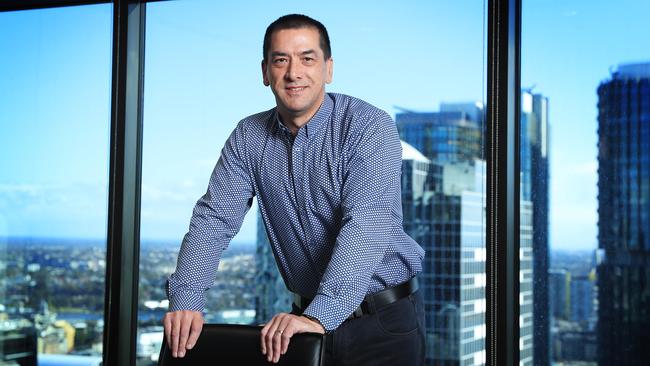
But things are changing.
Always a high-labour-cost country, Australia is now seeing its energy prices skyrocketing and a raft of government decisions at state and federal levels are collectively adding up to concerns for foreign investors looking at where to put their dollars.
While the passage of the Safeguards Mechanism, which comes into force on July 1, is part of the government’s suite of policies to reduce carbon emissions, it will add to already increasing domestic energy prices and make a raft of projects uneconomic.
As reported this week, the deal struck with the Greens to pass the legislation has prompted coal companies to describe it as a “carbon tax by stealth which will drive up energy prices, destroy jobs and kill foreign investment”.
Whitehaven Coal chief executive Paul Flynn has warned that the deal could create energy risks for strategic partners such as Japan.

A new report on the increasing role of Japanese investment in Australia, by law firm Herbert Smith Freehills, highlights “potential headwinds” for investors.
The latest report, the sixth from the firm which takes an annual deep dive into Japanese investment in Australia, has a largely upbeat tone noting how increasingly close political ties between Australia and Japan in recent years have been encouraging investors to put more money in Australia.
The Japan-Australia relationship, it says, has never been stronger, with trade and foreign policy increasingly interlinked.
After a reduction due to Covid-19 travel restrictions, Japanese investment in Australia bounced back last year with 50 new mergers and acquisition deals, and 51 new partnerships. The deals cover a broad range of areas from energy and resources to agriculture, food, tourism, technology, financial services, healthcare and even residential home building.
Japan ranks second behind the US in terms of cumulative foreign investment in Australia, now worth a total of $260bn.
Japan is Australia’s second largest trading partner and second largest export destination as two-way trade jumped by 75 per cent in 2021-22 to $117bn.
Megadeals completed last year included TAL Daichi Life Australia’s $900m acquisition of Westpac Life Insurance Services, and Mitsui and Nomura’s acquisition of 67 per cent of agricultural asset management group New Forests.
The basis of the relationship is strong, spurred on by a welcoming government here, a steady history of Japanese involvement in the Australian economy led by big names such as Mitsui, Mitsubishi, Sumitomo, Nippon Steel, Toyota, NTT, Kawasaki Heavy Industries, Marubeni, Itochu and Hitachi, and a lack of growth in Japan.
But, in words which echo remarks being made by other business leaders, the report also warns that there are potential headwinds for even the Japanese.

One example is last June’s decision by Queensland to increase coal royalties, which the report says “surprised Japanese companies (with) some commentators expressing concern that it affected the trust which Australia had built up with Japanese investors”.
That move also prompted criticism from BHP chief Mike Henry who said his company would pause plans for its Blackwater South coal mine in central Queensland – in part because of changes to the royalty scheme.
The Freehills report cites the recommendation by the ACCC last July that the federal government exercise the Australian Domestic Security Gas Mechanism because of a gas shortfall and the $250m funding cut in the budget for carbon capture and storage, and other new energy technology projects, as warning flags raised for Japanese investors.
It cites the moves by the NSW government in December to introduce a price cap on coal to combat energy prices rises and in February this year to introduce a domestic coal reservation policy.
The report notes “concerns have been expressed that these sudden changes in policies reflected Australian federal and state government unpredictability”.
Japanese investors were worried that “similar sudden changes could be applied to new energy exports and critical minerals”.
With Canberra taking a critical eye on Chinese investment, which has dropped in recent years in the wake of political tensions, it is looking to Japan as a trusty investor in the critical minerals area.
While Australia likes to trumpet its critical minerals resources, it has been Japanese investors which have stepped up to the plate in providing funding for listed rare earths company Lynas.
As the report points out, Japanese investors have plenty of options to put their money elsewhere.
“Any increase in the risk profile will increase the rate of return required for Japanese companies to pursue an investment and potentially reduce Australia’s competitiveness relative to other investment decisions,” it says.

In a discussion last week during a visit to Australia, the chief executive of global mining giant Glencore, Gary Nagle, was frank in his comments that he saw Australia becoming a “more challenging” place to invest.
In the past, he said, global investors saw Australia and Canada as the “benchmarks in terms of secure investment jurisdictions”.
“What we’ve seen, over the last 12 months or so, is some gap opening up between Australia and Canada.” As he notes, companies like Glencore have a “finite pool of capital” they can allocate around the world.
“Australia has probably become a less obvious place to invest incremental capital over the last 12 months,” he said. Nagle also cited the Queensland’s increase in royalties on coal as “one of the contributing factors” behind its decision to put its Valeria project in the state on hold.
Even local companies, such as Andrew Forrest’s Fortescue, are making decisions about the attractiveness of Australia versus other global opportunities.
Forrest recently cited the US Inflation Reduction Act as a reason for his green energy subsidiary Fortescue Future Industries to invest more in the US.
The Freehills report also warns that the US IRA “has significant competitive implications for Australia” in the area of renewable energy, warning that Australia may need to revise its policy settings to remain competitive.




Australia has long dined out on being an attractive place for foreign investors, with its stable political system, rule of law, natural resources, educated population, sophisticated commercial and financial system and cheap energy.